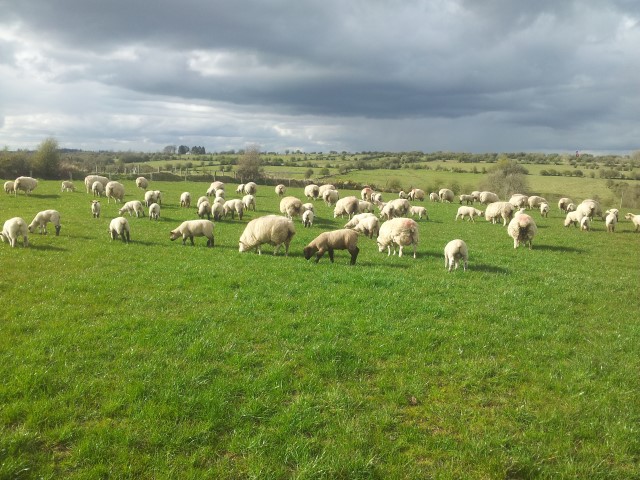The View from Teagasc: Dr Tim Keady of Teagasc’s Animal and Grassland Research and Innovation Centre in Athenry recently presented some interesting information for sheep farmers on the advantages of finishing lambs from grazed pasture.
The key conclusions from his update was as follows:
1. High levels of lamb performance can be obtained from grazed pasture offered as the sole diet.
For twin lambs target daily liveweight gain pre- and post-weaning are 295 g/day and 195 g/day respectively.
2. To achieve high levels and lamb performance from grazed pasture:
(a) have a grazing plan that ensures adequate grass at turn-out, ie, start to remove stock from paddocks the previous November in rotation with post grazing sward heights of four cm.
(b) Graze pasture tight early in the season. For a rotational grazing system target post-grazing sward heights are 3.5, 4.5, 5.0 and 6cm for April, May, June and July respectively.
(c) Remove paddocks from the grazing system in late April/early May when there is an estimated 15 days grass supply ahead of the flock.
(d) Allocate the highest feed value pasture to lambs post-weaning, ie, aftergrass or graze lambs in a leader-follower system – the lambs as leaders and the dry ewes as followers.
(e) When grass supply is scarce in April, grazing to post grazing sward heights of <3 cm for two weeks does not require concentrate supplementation for the ewes.
(f) Increase lamb birth weight. Each 0.5 kg increase in lamb birth weight increases weaning weight by 1.7 kg and reduces days to slaughter by about two weeks.
(g) Leave male lambs entire. The benefit of higher growth rates from entire male lambs, relative to castrates, increases as lambs get older.
3 Concentrate feeding lambs at pasture
(a) Increases lamb performance and reduces the age of slaughter.
(b) The response to concentrate feeding depends on grass supply and concentrate feed level. As grass supply and concentre feed level increase, response to concentrate, as determined by lamb liveweight gain per kilogram concentrate, decreases.
(c) For the majority of mid-season prime lamb producers feeding concentrate is not economically justifiable.
(d) Sheep producers should invest in good grassland management, rather than concentrates to increase financial margins and reduce labour requirements.
4. Alternative forages
(a) Do not increase animal performance relative to well-managed, old permanent pasture.
(b) When growing alternative forages the emphasis of the producer may change from increasing flock productivity to growing the alternative forage crop.
(c) Tyfon increases forage production for the first grazing cycle, but reduces forage availability for the second, third and fourth rotations.
(d) Utilisation of tyfon can be as low as 60 per cent.
(e) Tyfon results in open swards during the first grazing season.
(f) Chicory produces low herbage yield, and consequently a much reduced stocking rate.
(g) On moderately stocked farms (ie, < nine ewes/ha) emphasis should be managing existing swards rather than re-seeding.
(h) On a sheep farm re-seeding should occur in early autumn when herbage demand is relatively low as the lambs are weaned / sold and winter forage has been conserved.
(i) Re-seeding in early autumn provides high feed value herbage to finish remaining lambs in autumn. Prepare the flock for the breeding season whilst ensuring early grass for the subsequent lambing season.
